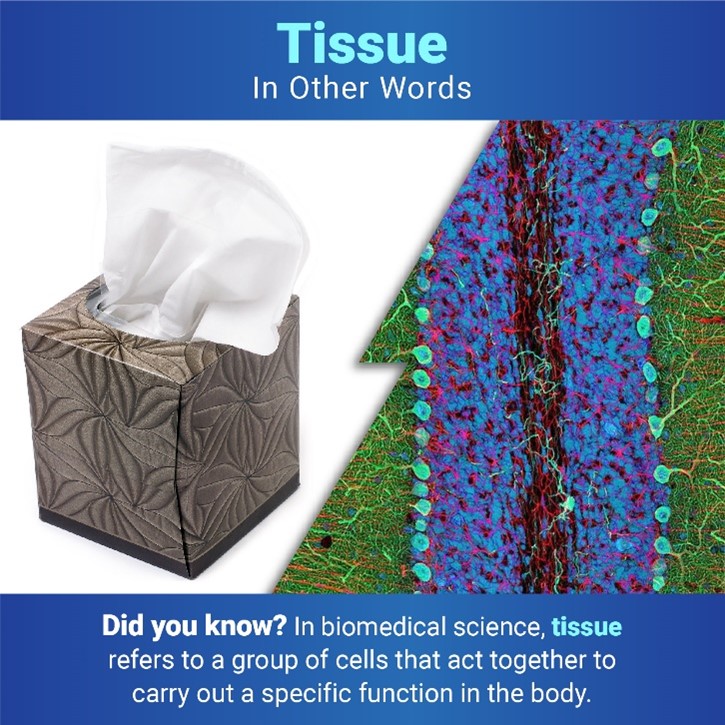When most of us hear the word tissue, we think of something we reach for when we have a runny nose. But in biology, a tissue is a group of cells that act together to carry out a specific function.

Your body has four basic types of tissues:
- Muscle tissue provides movement. Types include voluntary muscles, like those in the arms and legs, and involuntary muscles, such as those that move food through the digestive system.
- Nervous tissue carries messages throughout the body and includes the brain, spinal cord, and nerves.
- Connective tissue supports other tissues and binds them together. Examples include ligaments, tendons, bones, and fat.
- Epithelial tissue creates protective barriers and includes the skin and the linings of internal passageways.
A tissue’s cells broadly communicate information about themselves and their immediate surroundings by releasing signaling molecules. This communication allows other cells to adjust their behavior as needed for the good of the group.
A tissue can contain multiple cell types that each have their own job. All of a tissue’s cells are carefully organized to ensure proper function and are held together by adhesive molecules. Adjacent cells are typically linked by tunnel-like proteins. These tiny tunnels enable cells to share ions and small molecules such as sugars, amino acids, and vitamins that cells need to stay healthy. By working together through these connections, cells in a tissue perform tasks that would be impossible for them individually.
So the next time you reach for a box of tissues, think of all the different tissues in your body that make this action possible.


Informative in an elementary way. Excellent grade level of writing for most lay people Maybe add an organ pic or two. The Tissue box was a nice touch.
Can you do a topic request ? The Penial gland /intuition concept & fluoride. ⁉️
Explanation of the tissues was done very excellently a good intuitive by nih scientists
Very informative and intriguing! Could you please touch the mucosal layer function throughout the GI tract control of absorption, metabolism, excretion and signaling to other intercommunicatng tissue and organ functions!